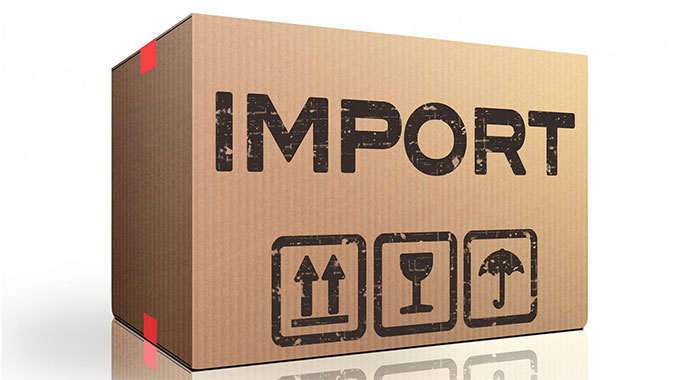Letters to the Editor: Relying on goods and services imports ‘kills’ firms

Lovemore Chikova
Many developing countries, including Zimbabwe, are increasingly turning to import substitution industrialisation in a bid to enhance their economic development agendas.
This comes after the realisation that relying on importing goods and services “kills” local industries and demands a lot of foreign currency, which is hard to come by.
If instituted well, import substitution industrialisation can lead to an increase in internal production, leading to the growth of economies and the creation of jobs.
But import substitution industrialisation has met with mixed results, espeicially in Africa, with relative success stories in some countries and a dismal report card for others.
Conditions that exist in most developing countries have mitigated against the success of such a policy.
As a result, many developing countries in Africa, Latin America and Asia are still stuck with lack of industrialisation, with their industries failing to satisfy the local market and create enough employment and substitutions for imports.
But there is now an increased call from economic development specialists for developing countries to seriously consider uplifting their local industries to produce competitive goods and services. Developing local industries results in the creation of the much-needed employment and the generation of foreign currency through exports.
Import substitution industrialisation arose as a response to the developmental challenges faced by developing countries in the 1940s.
The rationale was to set-up local industries which could provide manufactured goods for the domestic markets, thereby cancelling the need to use scarce foreign currency and thus improve a country’s balance of payment.
The concept is an inward-looking strategy in which domestic industries are developed to supply internal markets previously served through imports.
When it started taking root in the 1940s, import substitution industrialisation was widely viewed as an alternative, but also a compliment to other development strategies being implemented by newly independent States, especially in Africa.
It was a radical shift from the importation drive that had characterised most developing economies of that time, which had been incapacitated by the sudden flight of capital as colonialism came to an abrupt end.
There were three major reasons for pursuing import substitution industrialisation.
It was meant to bring about more rapid transfer of technological innovation in industry, in the process raising economy-wide productivity levels.
The other reasons were to have a greater absorption of labour in an era of rapid population and urban growth, and to bring about the movement of factors of production into industry and away from exports.
There is no doubt import substitution industrialisation is a good policy that needs to be revisited, especially on the implementation strategies that seemed to have not worked in the past.
The starting point is for developing countries to address the fundamentals that determine economic growth, and these include physical and human capital resources.
In fact, conditions that obtain in many developing countries like lack of modern technologies, depleted human resource skills base and lack of infrastructure work against successful implementation of the concept.
African economies continue to face fundamental structural constraints, including lack of economic diversification, low productive economic activities and poor infrastructure, even in countries where the import substitution industrialisaton model has been implemented.
Although import substitution industrialisation has been facing problems in some countries, it has been a success, especially in Asian countries like Singapore, China and South Korea.
These countries have managed to grow internal industries mainly anchored on technological advancements sourced from the developed countries.
In fact, import substitution industrialisation grew in the Asian countries on the back on their policies which attracted foreign direct investment.
This is one of the lessons that confronts other developing countries today – that the attraction of genuine foreign direct investment can bring in means that ensure industrial development.
Foreign direct investment can help create industries that can produce goods capable of competing on the international markets.
One of the notable achievement of Asian countries is that they managed to invest in education and training to create a highly skilled workforce capable of kick-starting local industrial growth by offering their expertise.
What is important for African countries is that the desire to go the import substitution industrialisation way has always been there, starting from regional bodies’ developmental programmes.
The Southern Africa Development Community, for example, has the SADC Industrialisation Strategy and Road Map 2015-2063. The industrial development programme seeks to ensure domestic resource mobilisation to fund local industrialisation in an effort to produce quality goods that can substitute imports.
In Zimbabwe, there has been a number of efforts to push substitution for imports.
The institution of Statutory Instrument 64 in 2016 which removed a lot of goods from the import list was meant to increase industrial output of the banned items as a way of curtailing imports.
Although the move had limited results because of low industrial output, it was credited for the increased production of certain goods locally, that were being sold at a cheaper price in shops.
Command Agriculture, also known as the Maize Special Import Substitution Programme, is another programme implemented by the Zimbabwean government in recent years in a bid to curtail imports.
The aim of the programme was to ensure food security and stop imports of the staple maize, and in the 2016/17 farming season, it was credited for producing 1,2 million tonnes of maize, enough to cover the country’s food requirements.
Other African countries have also been grappling with instituting import substitution industrialisation.
Zambia, for example, adopted a socialist philosophy of Humanism in 1968 which emphasised self-reliance and an inward-oriented development strategy.
During this period, the Zambian government diverted a lot of resources raised from copper to beef up industries, while high tariffs were charged on importing goods that could be produced locally.
South Africa has a fairly better results yielding import substitution industrialisation programme which it adopted at independence in 1994.
The South African government imposed high tariffs on imports that discouraged importation of goods that could be made locally, after investing heavily in local industrial development.
There is also India which has an import substitution industrialisation programme running under the theme: “Make in India”, which stresses the need to manufacture goods in the country.
From the above examples, it is clear that import substitution industrialisation can be achieved, but a lot needs to be done to ensure its effects are positive.
The first port of call should be for developing countries to develop enough skilled labour to satisfy the envisaged growth of industries, and couple that with the acquisition of the latest technologies.
Apart from that, the Asian miracle could not have happened without the countries complementing import substitution industrialisation with being export-oriented.
Being export-oriented results in the raising of foreign currency, which is a basic need for the acquisition of the latest machinery and technology that enhances industrial production.
The post-colonial State in Africa has been at the crossroads, facing a dilemma on which developmental trajectory to take and as a result numerous problems have emerged along the way.
Various forums have been held to discuss which why to go between following the developmental path pursued by Western countries or that which has been taken by several Asian countries.
It is also a fact that while African countries got political independence, this was not accompanied by economic freedom and the leeway to pursue their own economic agendas without being labelled as dictatorships.
For instance, when Tanzania’s Julius Nyerere attempted import substitution industrialisation through the Ujamaa villagisation model, he was quickly dismissed by Western countries as a dictator.
Nyerere’s model was anchored on the belief that increased production in agriculture would automatically lead to less dependence on imports for food and for raw materials for industries.
It was aimed at creating social collectivism and participation in the industrial development of Tanzania, and promote self-reliance as compared to depending on imports.
As a development economic model, import substitution industrialisation is still a good policy capable of transforming economies of developing countries into major world producers.
What is needed is proper planning, increase in industrial capacity utilisation and less political interference in the way industries are run.











Comments